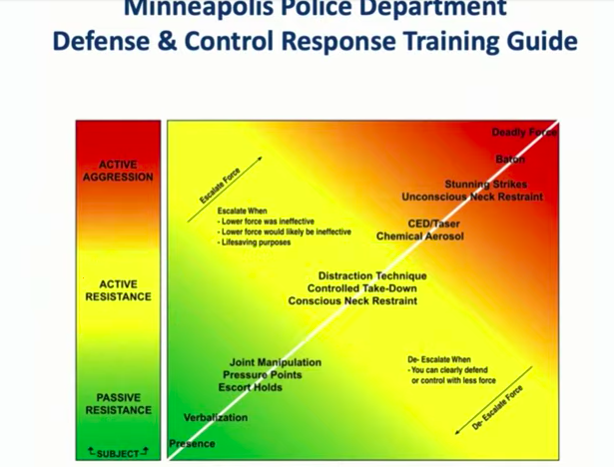 Kim Potter
Kim Potter Over the last 20 years, there have been about 15 incidents in which police officers confused handguns with tasers. Generally, experts explain the cause of this weapons confusion is due to stressful situations and inadequate taser training. That is, stressful situations can distract an officer’s attention and reduce his or her ability to process information. And thus, when a police officer is called on to draw and fire a taser, he or she may revert to drawing and firing his handgun because it is a more practiced task. To help disrupt the association between the more practiced task of drawing a gun and the intent to draw a taser, best practices in police training require officers to carry tasers on their non-dominant side. Nonetheless, some police officers continue to carry tasers so they are accessible to their dominant hand, and thus, more likely to be confused with their gun.
 Johnannes Mehserle. Cathleen Allison/Associated Press
Johnannes Mehserle. Cathleen Allison/Associated Press  Robert Bates. Tulsa World
Robert Bates. Tulsa World Both Mehserle and Bates were tried and convicted for manslaughter. Mehserle served about 11 months of a two-year sentence, and Bates served about 18 months of a four-year sentence. In two other cases, the victims recovered, and the authorities did not bring charges against the officers. Two cases remain unresolved. When a police officer kills a suspect and claims it was due to weapons confusion, the authorities may prosecute the officer and, if found guilty, he will usually serve some time. But like other instances of deadly excessive force, weapons confusion by police officers is not always punished. The trial of Derek Chauvin, the ex-Minneapolis policeman convicted of murdering George Floyd, suggested one way in which prosecutors might increase the conviction rate for police officers who use unjustified force.
Some observers of the Chauvin trial credited his conviction to a rupture in the “blue wall of silence.” Fellow officers are usually unwilling to testify against white police officers accused of using deadly excessive force against suspects. But eight of Chauvin’s fellow officers, including the chief of the Minneapolis Police Department, testified against him. The testimony of Chauvin’s fellow officers undoubtedly helped to convict him. Also, the amount of videotape documenting the murder was extensive and unambiguous. In some instances of deadly excessive force, the videotape evidence is brief and unclear. Observers must rely on the reliability of police witnesses to understand what happened.
Nonetheless, incriminating evidence from fellow police officers and videotape are not the only differences between the Chauvin and other deadly excessive force trials. In almost all the other trials involving excessive deadly force, the defense emotionally distances the suspect victim from the jurors. In his study On Killing, Colonel Dave Grossman showed that soldiers are not “naturally” willing to kill. Instead, the military must teach them to kill. Grossman uses the term “emotional distance” to characterize the process of overcoming resistance to killing. Defense attorneys for police officers accused of using deadly excessive force must teach the jury to be emotionally distant from the suspect victim. The defense attorneys do not simply portray the victim as someone who committed a crime. They try to show that the suspect victim is different from the jurors [and police] (i.e., the good guys). And because the suspect victim is “other,” he is not entitled to the same treatment as a “good guy.” The defense establishes emotional distance by showing the suspect victim was morally and culturally different from the “good guys” in as many ways as possible. The police are entitled to treat an emotionally distant suspect as odiously as possible. And, too often, the jury agrees.

